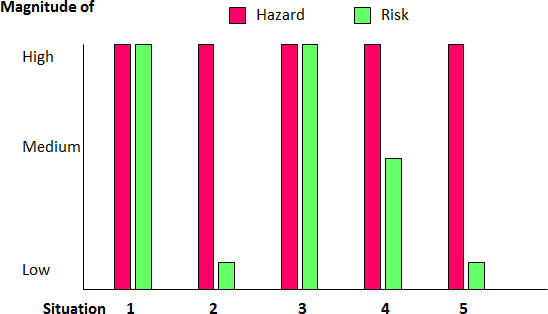This topic takes on average 25 minutes to read.
There are a number of interactive features in this resource:
 Science
Science
Learn more about risk assessment and hazard control in this section.
A hazard is something with the potential to cause harm.
The risk is the likelihood and the consequences of that hazard happening.
To take a simple example: a moving car is a hazard. The consequence is that it could kill you.
This, and any other example, can be shown graphically.

There are hazards all around us, and risks in almost everything that we do - making a cup of tea, carrying a heavy box, riding a bike - but most of the time we don't think about the risk, and we try to minimise it by the way we carry out the task
The pharmaceutical industry is a business that uses practical science as a basis to most of its work. Almost every day very dangerous chemicals are used, as well as radioactive substances and biological hazards such as bacteria and viruses. Pharmaceutical companies have to set controls for safe working and take into account the human and financial cost of accidents. There is a duty of care to all employees, contractors and visitors, and pharmaceutical companies are legally bound to create safe and healthy working conditions, safe procedures and buildings.
One of the ways in which risk to employees is minimised is by carrying out risk assessments. Everyone must take steps to minimise the chance of an accident happening by considering the risk involved before carrying out the task.
The safety of a workplace is also increased by the presence of safety signs. There is a standard for sign design and so everyone recognises them easily.
There are lots of safety signs in laboratory work areas. Your task is to match the hazard symbols to their meaning.